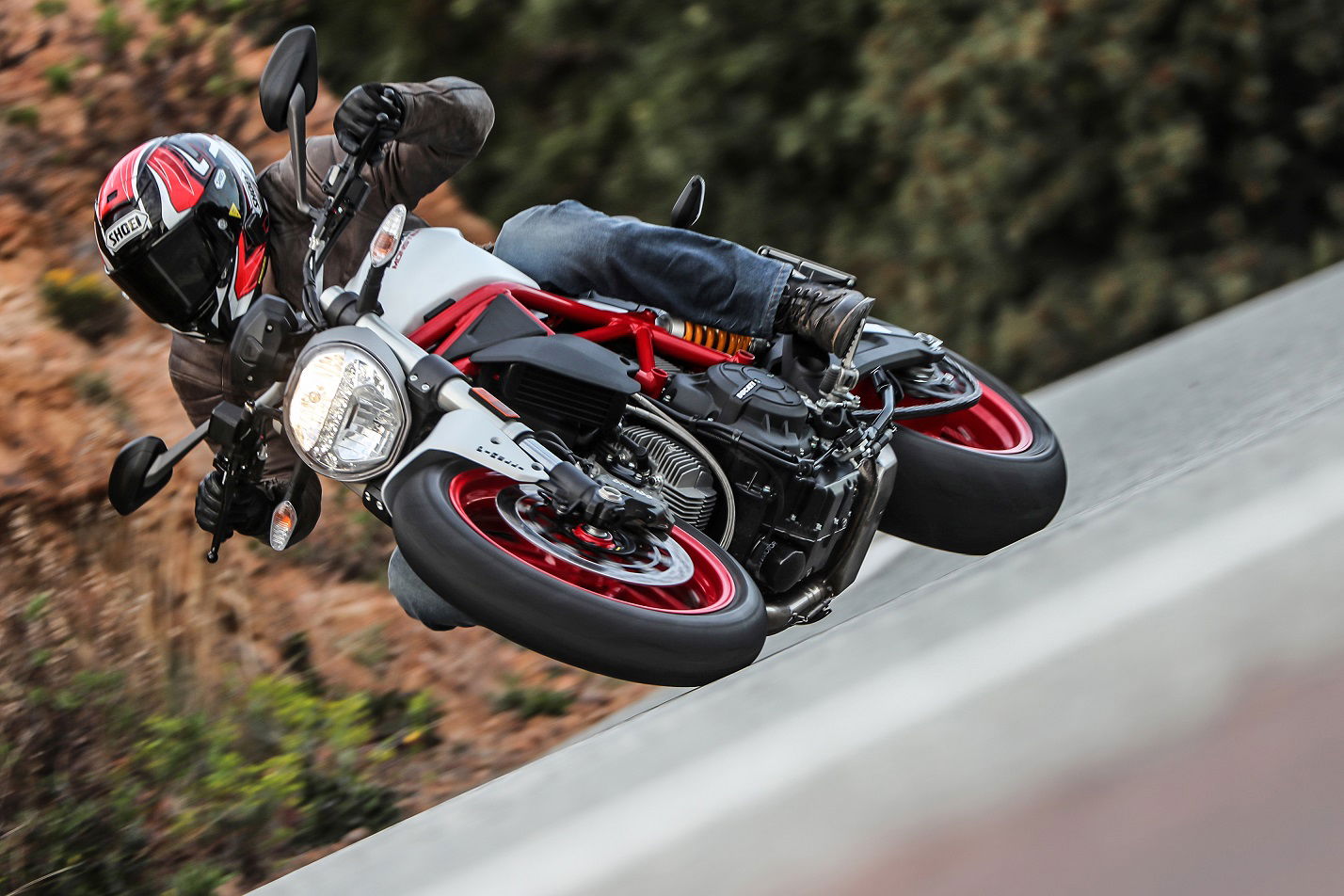2017 GSX-R1000R review
Suzuki just put itself well and truly back in contention for the litre sports bike crown with the 2017 GSX-R1000R.

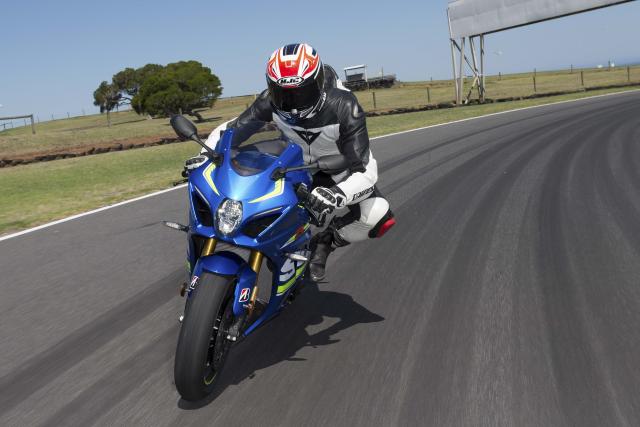
Run. Turn. Stop. Suzuki had used those three words to describe the core aims of the 2017 GSX-R1000R - what it’s calling the most powerful, hardest-accelerating, cleanest-running GSX-R ever built.
And they’re making plenty of sense as the bike rips out of Phillip Island’s long, late-apex, Southern Loop left-hander, Pacific Ocean glinting to the right, a salty sea smell in my nostrils and the scream of a hard-revving four-cylinder engine in my ears.
As its tacho bar hits 10 grand and the variable valve timing starts doing its stuff, the Suzuki kicks even harder and rockets forward at shoulder-wrenching rate.
Moments later it’s close to the 14,500rpm redline and still trying to rip my arms off on the right side of the track as I hold the throttle open and tap the shifter into fourth, then roll off momentarily and nudge the bars to crank it into the long left-hander of Stoner’s.
Now I’m hanging off the left of the bike at over 100mph, then straightening it up to brake super-hard for the right-hand hairpin, and effortlessly treading down two gears with the aid of the super-slick shifter.
The Suzuki remains poised as the ABS-equipped Brembos bite hard, and I squeeze the reshaped petrol tank with my knees in an attempt to keep some weight over the rear wheel.
Run. Turn. Stop. Whether it’s doing them better than its rivals is something only a back-to-back test will tell, but it’s definitely doing them all a lot more efficiently than its predecessor.
And after a fantastic day at the spectacular Phillip Island aboard the GSX-R1000R – the more upmarket of the two models – I’m not in much doubt that Suzuki’s comprehensively revamped four has enough about it to mount a serious challenge.
That it has plenty of straight-line speed was clear from the opening session.
The new 999.8cc motor makes 202hp at 13,200rpm, an increase of 17hp, thanks to a host of changes including shorter-stroke dimensions, increased compression and Suzuki’s MotoGP-derived variable valve timing system, a fiendishly simple device attached to the inlet camshaft, involving 12 steel balls that are flung out by centrifugal force when the revs reach 10,000rpm, adjusting the cam timing to improve top-end power.
The riding position’s unchanged and from the saddle the look is pretty familiar, apart from the new LCD display and the R-model’s cut-away top yoke holding fancy Showa fork-tops.
The motor fires up with a single jab at the starter button, sounding typically raspy, and pulls away easily with the help of Suzuki’s Low RPM Assist, which adds revs if necessary as you let out the light-action clutch, with the new Suzuki Clutch Assist System.
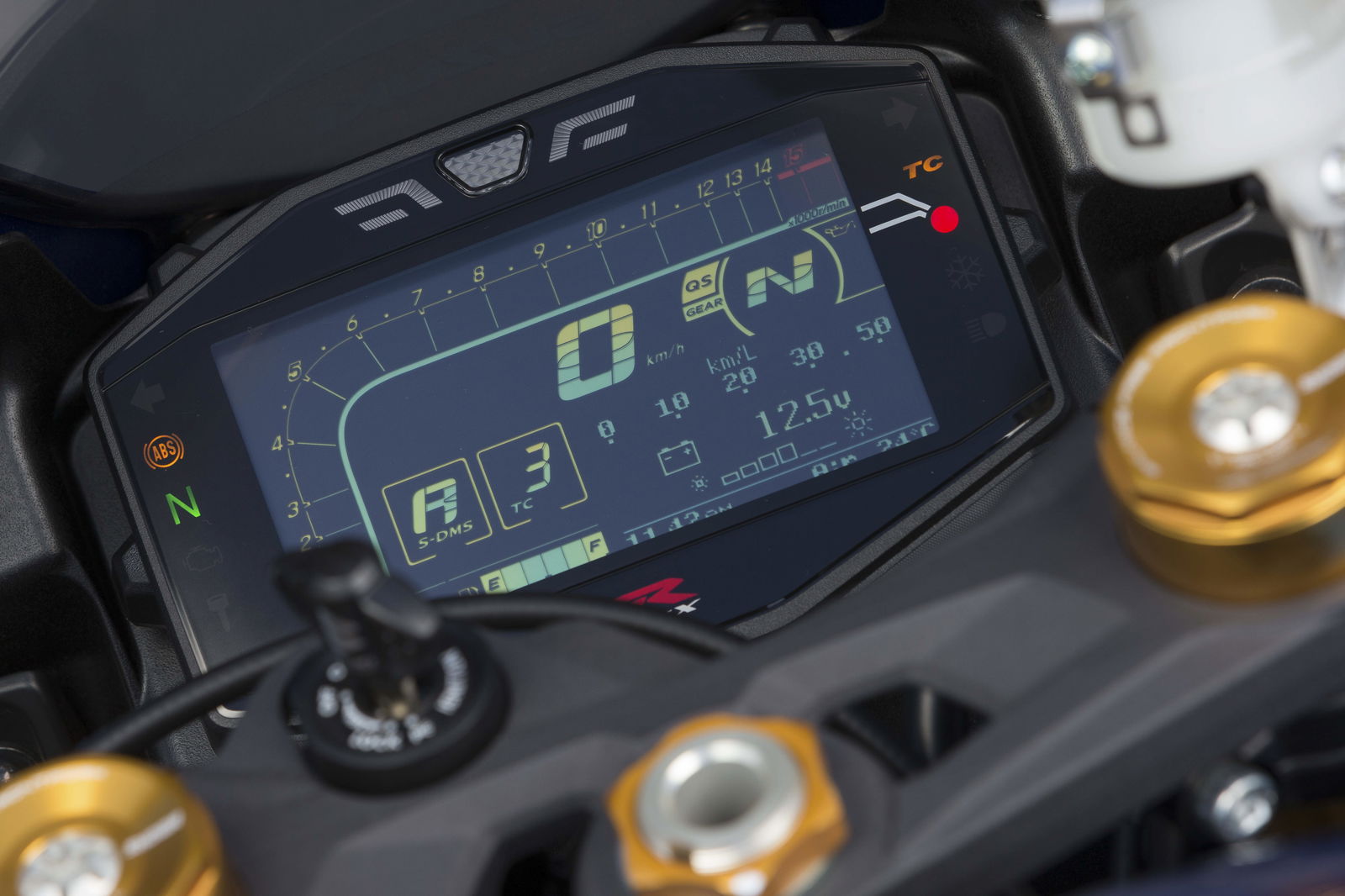
All very rider-friendly on the street, but it’s high-speed thrills we’re at Phillip Island for and the Suzuki duly obliges, ripping out of the turns with the all the grunt and rev-happy enthusiasm you’d expect from this most powerful production GSX-R yet.
Fuelling is excellent (on track I stick to the most aggressive of the three maps), and the mid-range response feels as strong as ever, the bike punching hard out of slow-speed turns and even charging up the hill out of the final, fast fourth-gear sweeper with a mighty surge, before I tuck my head behind the bubble and snick-snick through the last two gears.
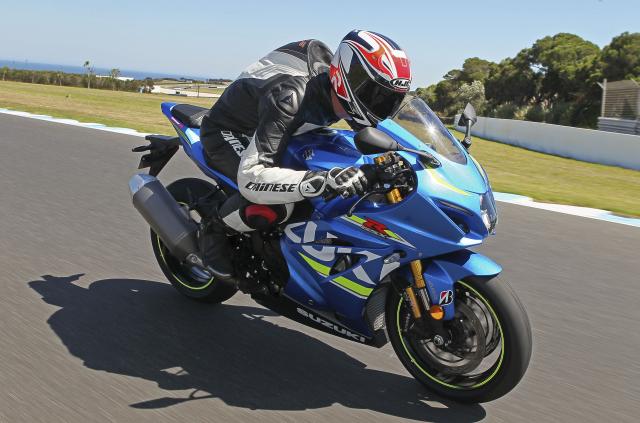
On that Gardner pit straight it feels mighty rapid although the front end never threatens to lift (perhaps because the traction control resists in all but its lowest setting), screaming to over 170mph as I tuck behind the slightly slimmer fairing, grateful that the redesigned petrol tank is lower to leave more room for a speeding rider’s helmet.
I’m not sure that the front brake lever’s MotoGP-style slot, to prevent the stopper being activated by the wind at high speed, is strictly necessary but I’m glad to have it just in case…
The stopper is good, though maybe the Brembo Monoblocs don’t quite have the bite of some systems despite the larger, 320mm discs.
The ABS system is better than advertised, though. Suzuki’s engineers offered to fiddle with the electrics to turn it off after the first couple of sessions (officially the system can’t be deactivated) but most riders leave it on, because it hardly ever seems to cut in.
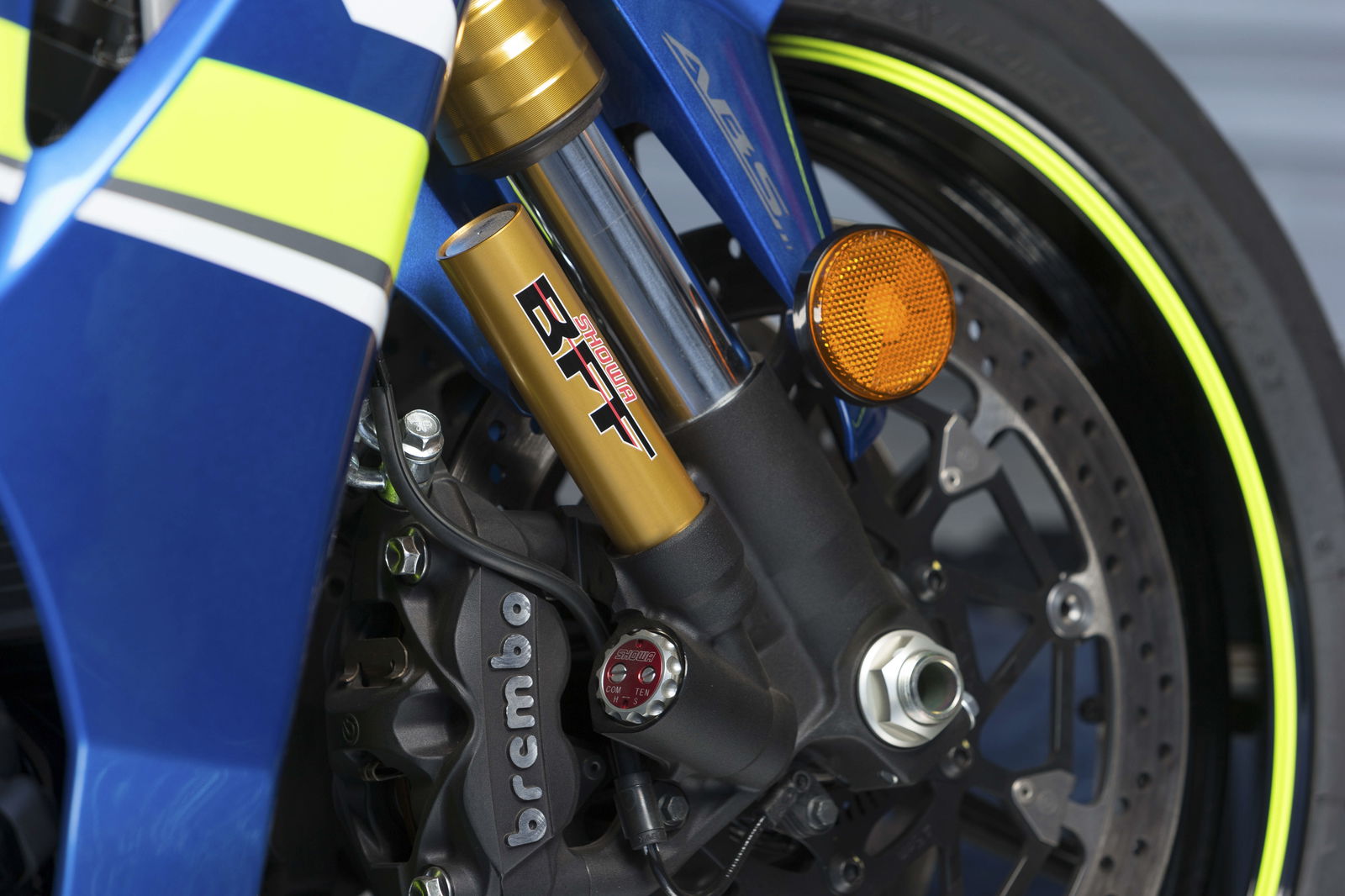
By the second session I’ve relearned the track sufficiently to start pushing the chassis a bit, and it doesn’t let me down.
The new frame is lighter, the engine’s further forward for more weight over the front wheel, geometry is steeper and the wheelbase is 15mm longer to help stability.
On the R-model (all the launch bikes are Rs) we’ve got Showa’s high-end Balance Free Forks and Balance Free Rear Cushion lite shock, as fitted to Kawasaki’s ZX-10R. It’s good stuff: taut, well-damped and responsive to adjustment.
I’ve started the day on Suzuki’s stiffer-than-stock track settings, which are good but improved further by a touch more shock damping, especially when the standard-fitment rear Bridgestone RS10 starts sliding around in the 30-degree heat of an Aussie summer day.
I’m glad to have the safety net of the traction control, which allows some medium slides on its second least intrusive setting.
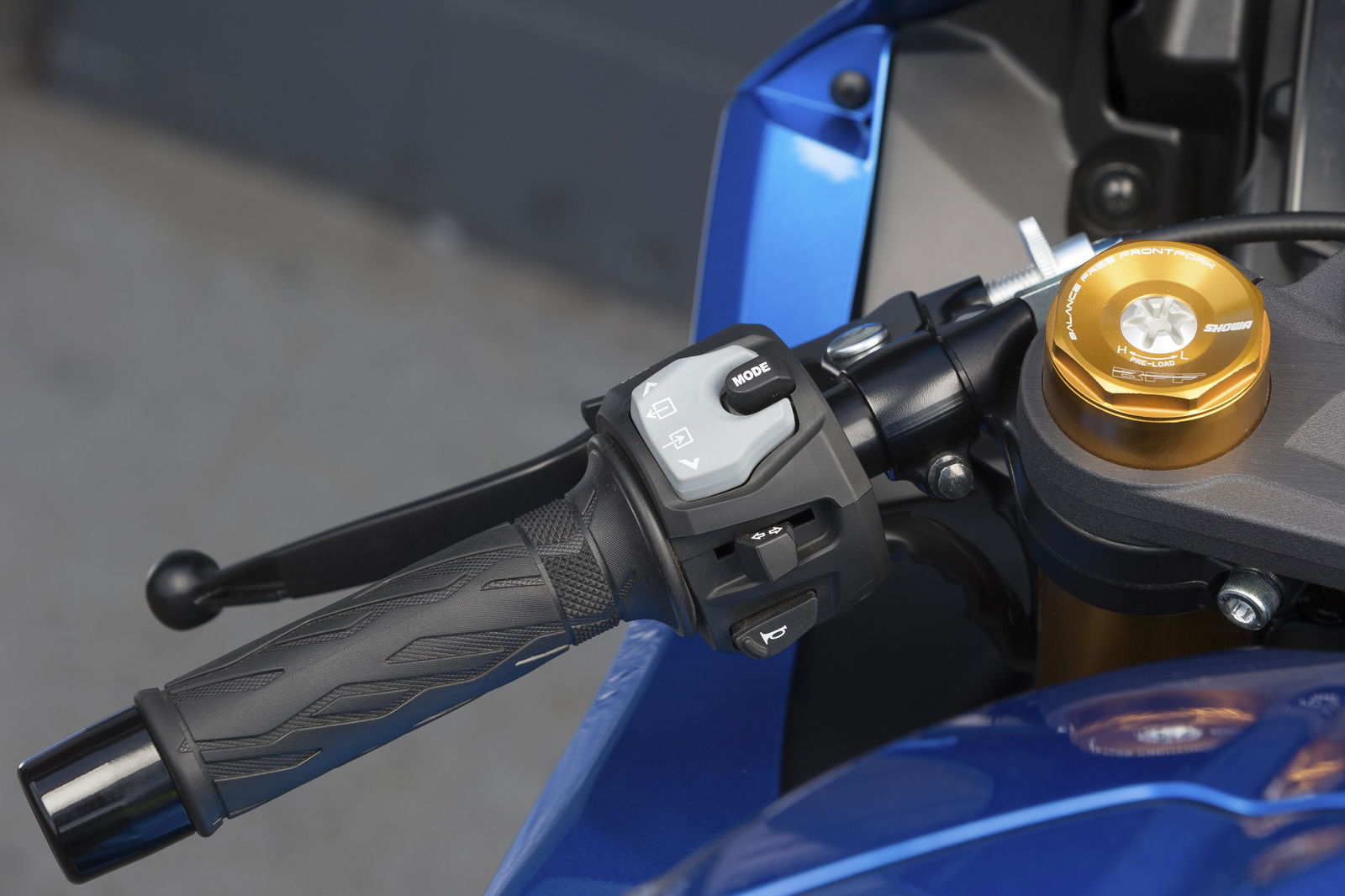
The bike is infinitely more planted after lunch, when we’re on stickier R10 race rubber that allows significantly more throttle abuse before moving around.
Even on the street tyres the bike handles superbly, combining flickability with neutral steering and a very composed cornering feel.
At 203kg wet it’s a few kilos heavier than its lightest rivals but feels sharp and very precise, whether it’s flicking into the second-gear right-hand hairpin, climbing the steep uphill left-hander to Lukey Heights, or powering out onto the pit straight, occasionally twitching if I run too wide where the track drops away.
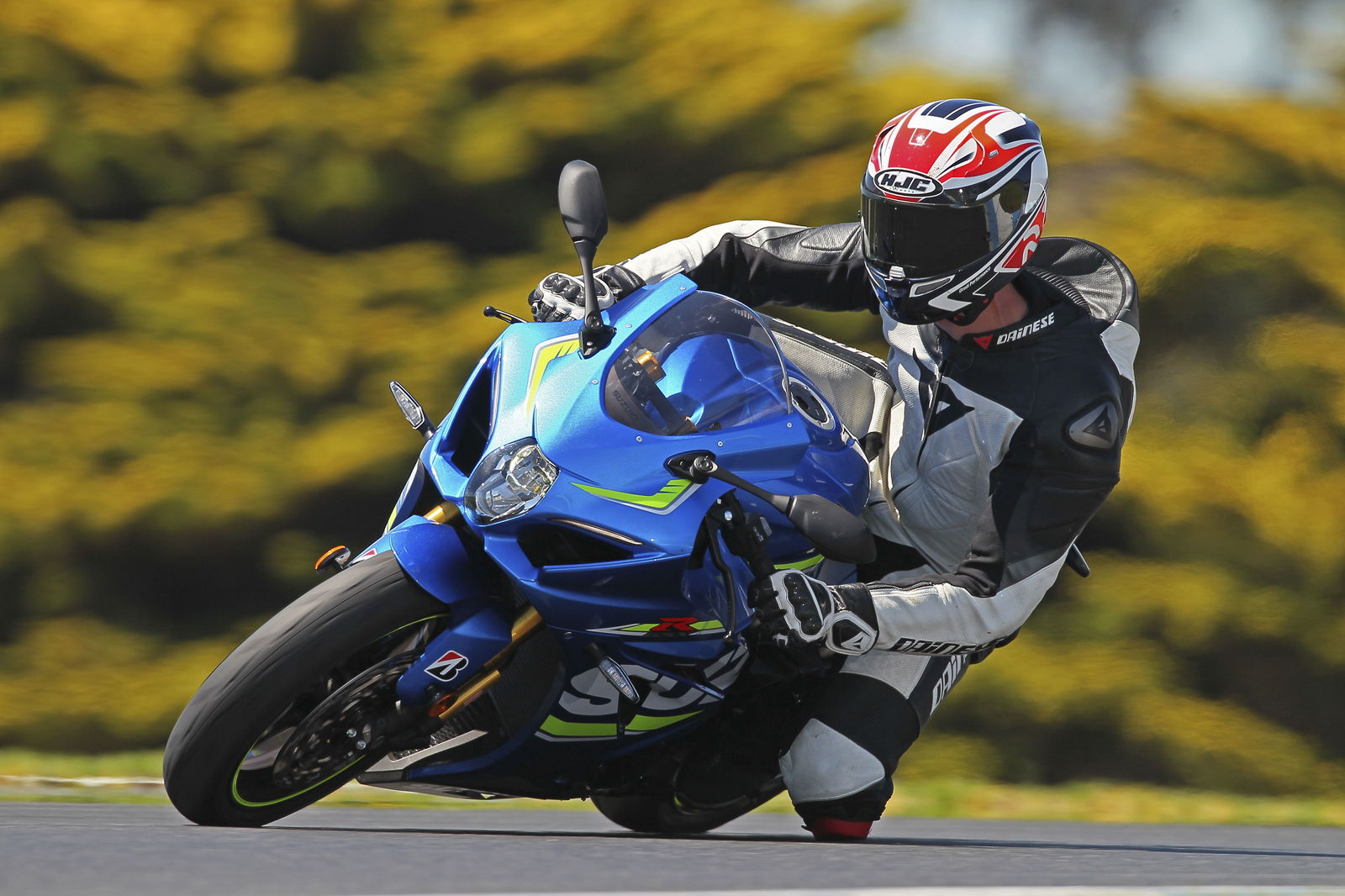
The super-sweet gearbox and quick-shifter are often a real asset when I’m trying to change gear while braking or moving across the bike.
Being tall, I’m also glad to find the Suzuki feels roomier than most super-sports bikes, so I rarely have the problem of getting my feet set on the pegs in time for a turn. A couple of riders mention vibration from the engine, which no longer has a balancer shaft, but on track I’m not aware of it (a long road trip might seem different).
On the contrary, I find the GSX-R pretty comfortable and wish we could keep going when the chequered flag ends the fifth and last session.
Should you buy the 2017 GSX-R1000R?
We won’t know where it ranks against all its rivals until the comparison tests begin – which in the R’s case won’t be till at least May, with the standard model beating it into showrooms by a couple of months.
But both models look like being in contention, and with prices of £16,099 and £13,249 respectively they’re among the least expensive of the open-class super-sport set.
Run. Turn. Stop. The GSX-R1000 story had all but come to a halt, but it’s definitely back up and running now.
Suzuki has sold almost a quarter of a million big Gixxers since the first one raised the super-sport bar in 2001. This latest, fastest, most advanced addition to the famous line is surely not only the best but also the most significantly improved of the lot.
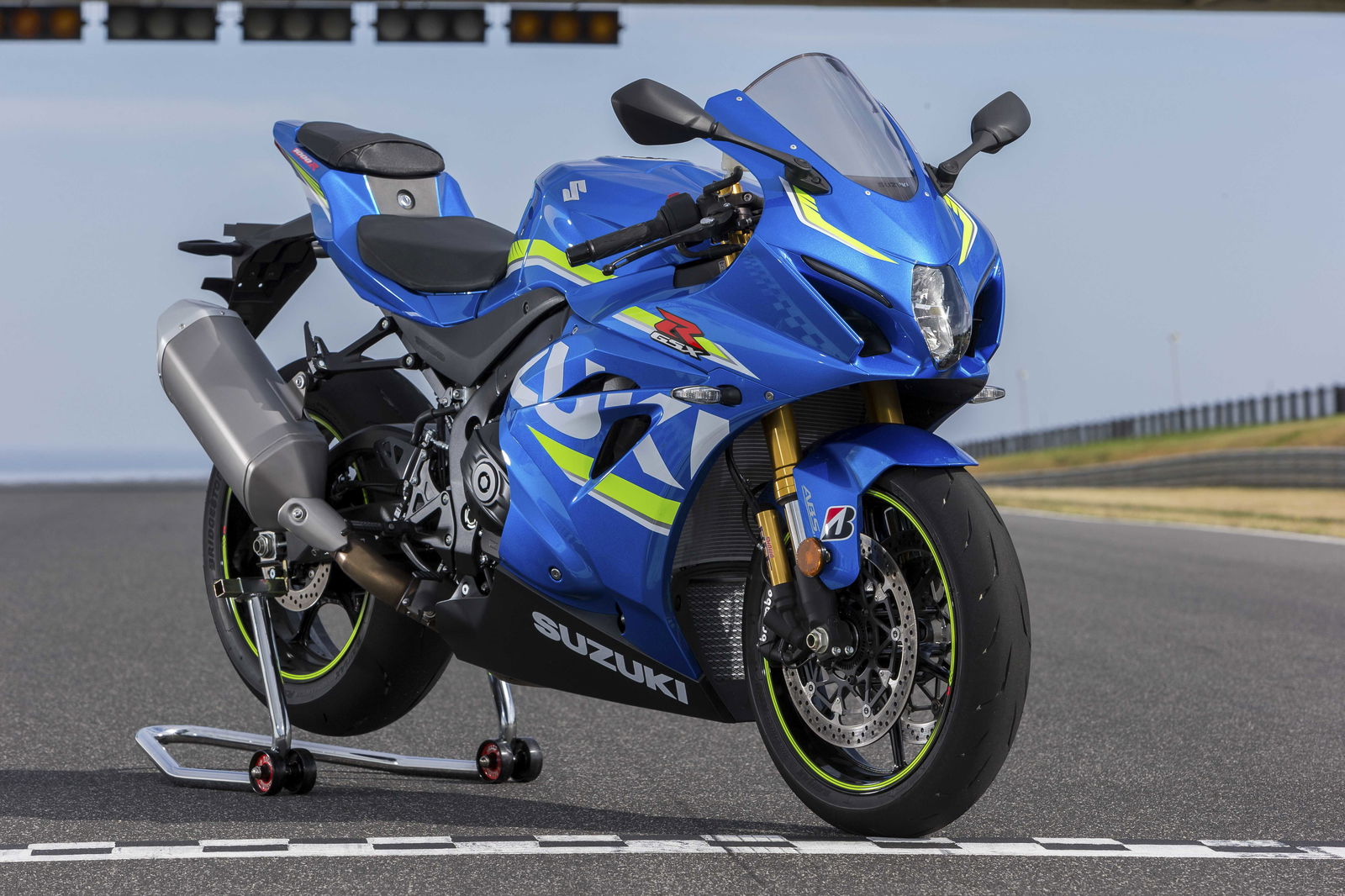
2017 GSX-R1000R specs
- Model tested: 2017 Suzuki GSX-R1000R
- Price: £16,099 (standard GSX-R1000 £13,249)
- Power: 202hp
- Torque: 86.7lbft
- Wet weight: 203kg (standard GSX-R1000 202kg)
- Tank capacity: 16 litres
- Seat height: 825mm
- Colours: blue, black
- Available: May (standard GSX-R1000 March)

